From the flower gardens of Floriferous to the skies of Wingspan, we’ve reviewed a lot of games here at Meeple Mountain that celebrate the things that fill this world with the diversity that keeps it interesting. We’ve even explored the way that diversity has emerged and how board games can be used as educational tools to further our understanding of it. But just as important as those things which make every living being on this planet different are the commonalities that we all share.
Every living being requires sustenance to survive. This is a common trait that unites us. It’s a characteristic that binds all things together, plants and animals alike. But what makes things really interesting are the different ways that we all go about obtaining that sustenance that we need to survive.
In one of Genius Games’s previous titles Cytosis, players learned how the food they put in their stomachs is utilized at a cellular level. In their newest title Cellulose, Genius Games once again delves into the science of cellular biology, but the spotlight has swiveled away from the fauna and has rested its gaze on the flora instead.
In Cellulose, players will be competing to score the most health points (read: victory points) by the game’s end. Using worker placement, players will be collecting H2O and CO2 to turn into carbohydrates to construct the plant cell’s wall or turn into energy, energy and proteins to play cards from their hand to gain their abilities or score points, and hormones to increase the effectiveness of their plant’s above- and below-the-ground systems. Point scoring opportunities abound and the player who is able to score the most before the game’s end will be crowned the victor.
Of course this is a high level overview of the game. If you’d like some more detail about how the game is actually played, read on. Otherwise, feel free to skip ahead to the Thoughts section to find out what I think about Cellulose.
Setup
Cellulose consists of two different playing areas: the main game board (which I’ll refer to as the Main board) and the Plant board. Most of the action will take place on the Main board: a collection of worker placement areas, a water level track, an empty card row, and a score track that runs along the outer border. These boards are laid out and then each player will select a color and take the matching colored pieces into their control. In addition to the player pieces, there is also a water level marker (placed on the 5 space of the water level track) and a neutral gray worker that is placed in the vicinity of the Central Vacuole area of the Main board.
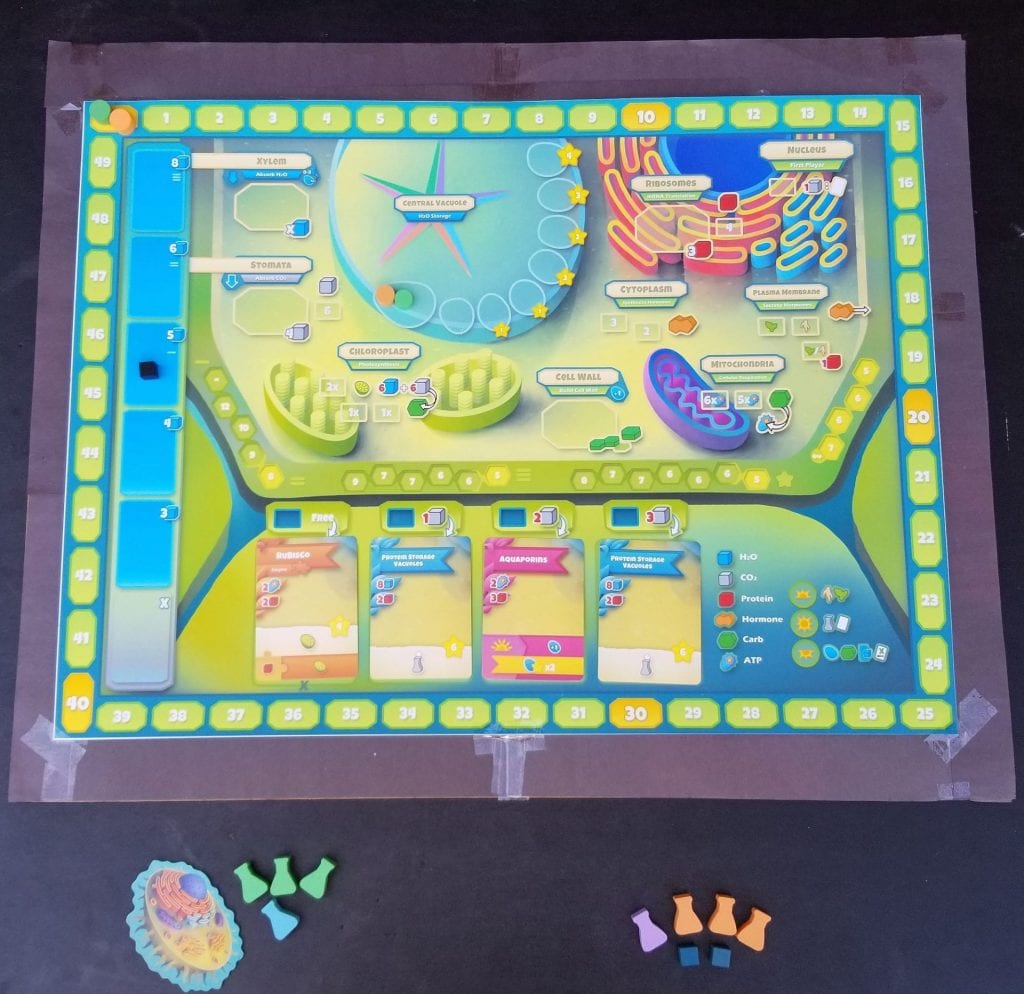
Each player begins with 3 workers (flasks) and 4 smaller markers. 1 of these small markers is placed on the 0 of the score track, 1 on the starting space of the Central Vacuole track, 1 next to the bottommost Shoot track space of the Plant board, and the last next to the topmost space of the Root track on the same board. In a 2 player game, each player will also take 1 flask from an unused color.

Aside from this, the only other setup that needs to be done is to shuffle the Cell Component Cards together into a deck then draw 4 from the top and place them onto the empty spaces of the Main board. After setting the remainder of the deck off to the side, a starting player is selected and given the Starting Player token and each other player is given a number of water cubes depending on their position in turn order. The cubes (water, CO2, and proteins), carbohydrates, hormones, and ATP tokens are kept in a general supply.
Now you’re ready to begin playing Cellulose.
Breaking Down the Day
Cellulose is played over a series of rounds which are divided into three distinct phases: Morning, Daytime, and Evening.
In the Morning, players will collect water and CO2 based on their positions on the Plant board. There are some cards the players will be able to collect that may also provide additional morning time income or benefits. Those benefits would be conferred at this time.
In the Daytime, players will take turns placing their workers onto the Main board to perform the various actions printed thereon. After a player takes an action, they will then be able to play a card from their hand provided they can pay the costs to do so. Some actions can only accommodate a single worker while others can hold any number of workers. For these spots, only one of a player’s workers may be present there at any given time.
In the Evening, a cleanup is performed. Any card in the free spot is removed, the other cards shift to fill empty spots, and new cards are introduced. The water level track is reset. An area majority scoring is performed in the Central Vacuole. And a carbohydrate is added to the cell wall which may trigger the end of the game (more on this later).
The Action Spots
The action spots on the Main board come in two varieties: those that reward you with resources and those that allow you to spend those resources to do other things. Of the first type, there are 5: Xylem, Stomata, Ribosomes, Cytoplasm, and Nucleus which provide water, C02, proteins, plant hormones, and the Starting Player (plus a card drawn from the top of the Cell Component deck) respectively. The Xylem and Stomata consist of 2 action spaces – a single worker spaces which provides a larger payout and another space which can hold any number of workers but provides a smaller payout. Taking either of these actions will cause the water level to lower by 1 which means that future Xylem actions will reward the player with less water than the players that came before them. Taking a Xylem action also allows a player to add some of their collected water to their area of the Central Vacuole if they so choose.
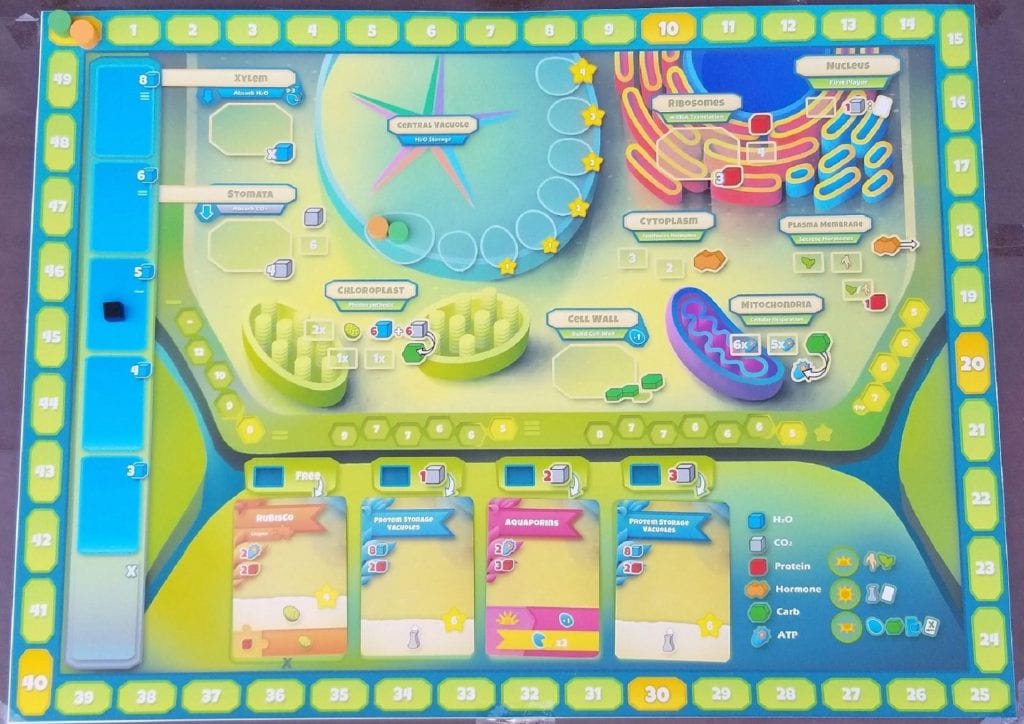
Of the second type of action spot, there are 5: Chloroplast, Cell Wall, Mitochondria, Plasma Membrane, and the card spaces. Chloroplast allows a player to return 6 water and 6 CO2 to the supply in exchange for a carbohydrate (a.k.a. photosynthesis). Cell Wall allows a player to add a carbohydrate to the cell wall earning a number of health points equal to whichever number they covered (possibly triggering the end game). Mitochondria allows a player to convert a carbohydrate into 5 or 6 ATP. The card spaces list a cost above each slot (in CO2 cubes) the player must pay in order to take that card into their hand. The final spot, Plasma Membrane, requires a bit more explanation.
The Plant Board
The Plasma Membrane action is how players will interact with the Plant Board. There are actually 3 actions here that can only accommodate 1 worker apiece. 1 allows the player to move their Shoot track marker up 1 space on the Plant Board. 1 allows the player to move their Root track marker down 1 space. The other allows the player to pay a protein cube to do 1 or the other.
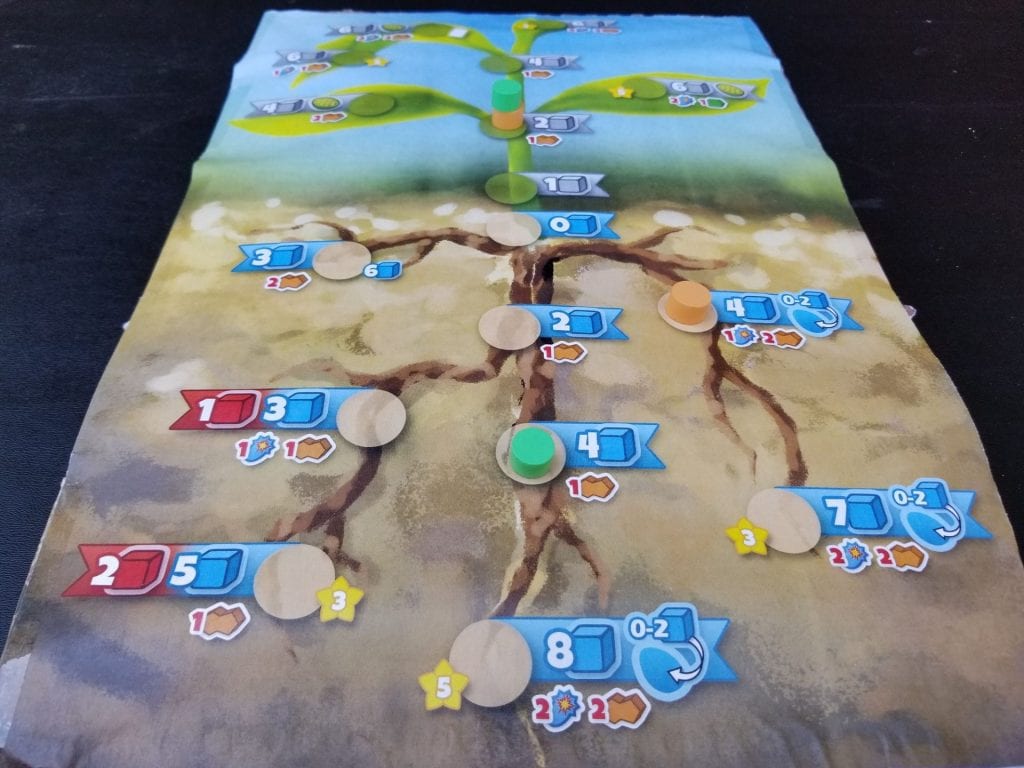
Printed below each space on the Plant board is a cost for moving into that space. These costs typically consist of a number of hormones but may also include the payment of some ATP as well. At some point a player will be faced with multiple branching pathways to consider. Once they have begun moving down a particular branch, they may not backtrack, so careful consideration should be given to where they ultimately want to wind up. Some of these Plant Board locations provide immediate health points and 1 even provides an immediate influx of water. More importantly, each spot always provides some sort of income during the Morning phase.
The Central Vacuole
As mentioned previously, the Xylem action (along with several other game effects) provides players with an opportunity to place water cubes they have collected (and possibly even from the supply) into their area of the Central Vacuole. When the Evening phase occurs, each player’s cubes are counted up and the player (or players) with the most will move up 1 spot on the Central Vacuole track before having their cubes removed and scoring the health points shown on their current position. Everyone else’s cubes remain.
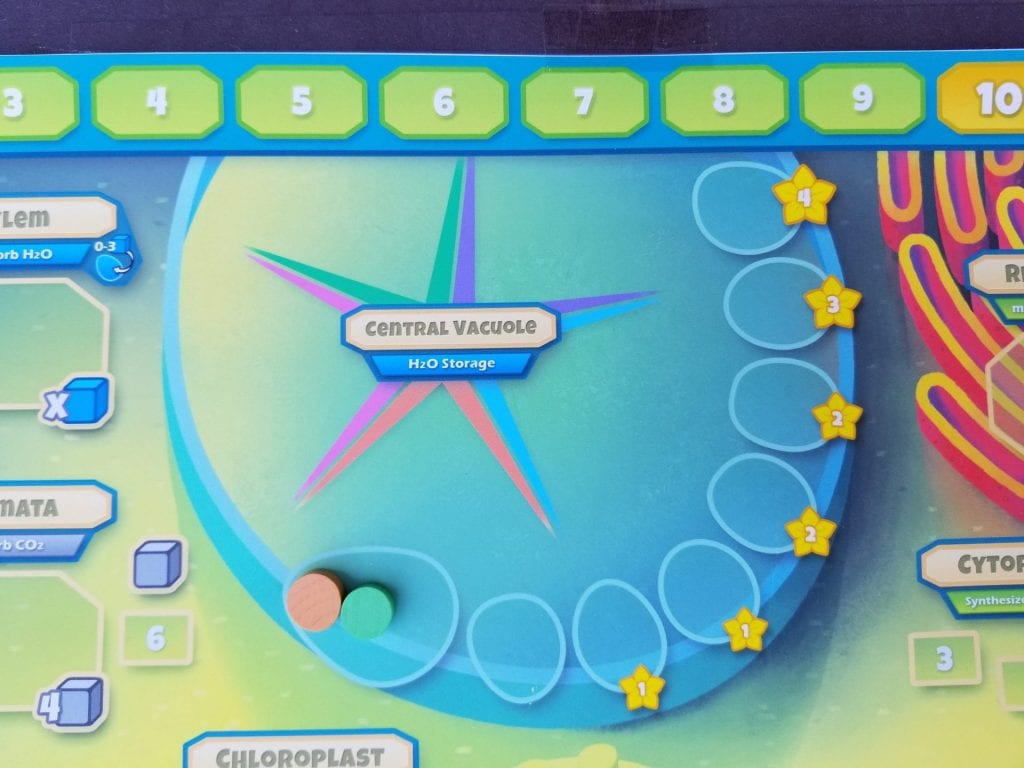
In addition to end game points provided by moving higher up the Central Vacuole track, another important benefit is provided by winning the area majority here (provided there are no ties): the neutral gray worker which acts as an additional worker during the next round.
The Cards
Cards come in several types: Enzymes, Protein Storage Vacuoles, Starch, and Special. The costs for playing these cards into a player’s playing area is displayed along the left middle side of the card.
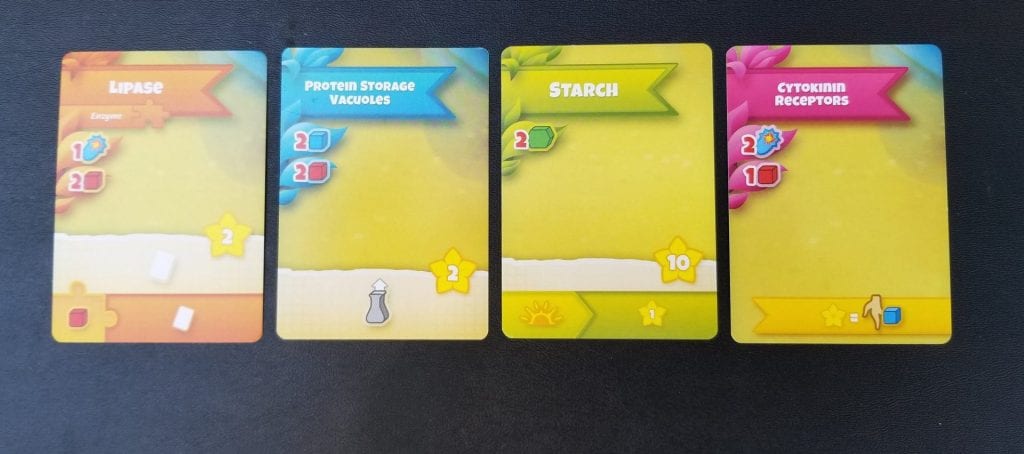
Enzymes will typically provide some instant benefit when playing them (some health points or a free Chloroplast action, for instance) when initially placed as well as another action that fires off whenever their controlling players places an Enzyme at a later time.
Protein Storage Vacuoles allow the player to retrieve one of their already placed flasks from the board and also provide a number of health points. The higher the cost for playing the card, the more health points will be earned.
Starch will earn the player a large chunk of points immediately as well as an additional health point during each Morning phase. Like Protein Storage Vacuoles, the higher the cost, the higher the payout.
Special cards will provide health points during end-of-game scoring and may also provide extra benefits during the Morning phase.
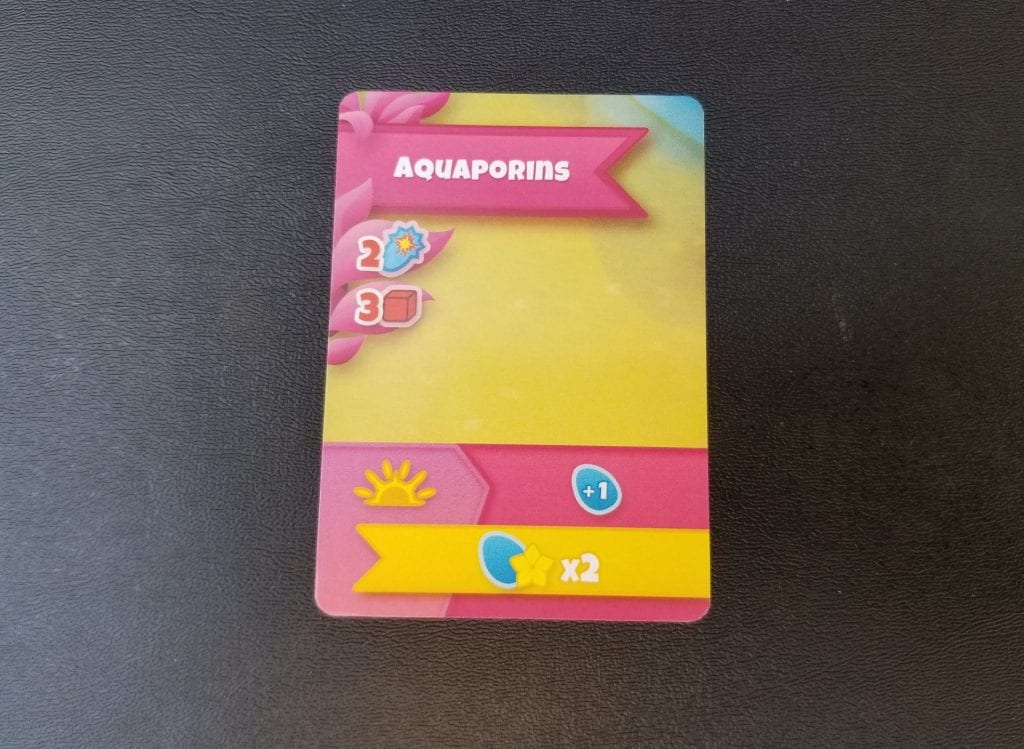
End Game
The end game is triggered when the final spot on the cell wall has been filled with a carbohydrate. If this occurred on a player’s turn, then the current round is finished before end-of-game scoring. If this occurred during the Evening phase, the game ends immediately.
In end-of-game scoring, players will earn points from their Special cards and unspent carbohydrates (3 per).
Thoughts
At the risk of sounding like a broken record, Genius Games continue to impress me with their seemingly preternatural ability to gameify science; turning hard to grasp concepts into fun and approachable games. They’ve become a publisher that I know I can trust to not only present me with a titillating gaming experience, but a valuable learning one as well. For instance, did you know that not every plant requires photosynthesis to survive? I certainly didn’t before the act of writing this review sent me down an internet rabbit hole.
I can also count on Genius Games to present me with a product that looks good on a table. Cellulose is no exception. Tomasz Bogusz’s talent is on full display here. His use of bold, neon colors is a style that has become synonymous with Genius Games (at least in my mind). In fact, he’s been the lead artist on almost all of their games.
While not-ideal component quality and an unpolished rule book are things that I expect in a prototype, they aren’t as important as the answer to the questions of whether or not I received a playable game and, more importantly, if that game is any good. I confess that it took me awhile to get the game to the table, but when I finally did, I was excited to find out the answers to these questions. As it turns out, my copy of Cellulose is not only very playable, but it is an excellent game as well.

Cellulose pulls its players in a lot of directions often forcing them to have to sacrifice one good option in favor of another. Take the Xylem action, for instance. Water goes fast. If you wait too long to send a worker to this spot, you could miss your chance to gain any water during the round. This scarcity creates an impetus to send a worker here while you can and seems like an obvious good move to make. But every action on the board is just as critical and just as limited, so you obviously want to take those actions as well.
Want to progress on the Plant board? Better hurry up. Those spots go fast.
Want to convert your water and CO2 into carbohydrates? Better hurry up. Those spots go fast.
Do you see a card that you want to acquire? Better hurry up. Those spots… well, you get the picture.
Some actions eventually lose their lustre, though. Once you’ve reached the end of a branch on the Plant board, you won’t need to utilize the Cytoplasm or Plasma Membrane locations any longer. While it’s disheartening to see spots on the board not being utilized, this does have the net effect of putting even more pressure on the other spots on the board, particularly the Nucleus. Being the Starting player in Cellulose is very important. In a world of scarce resources, you’ll always have first pick of the lot.
There are a lot of things to like about Cellulose, but of particular note are the Enzyme cards and the Central Vacuole scoring. I love the way that the Enzyme cards chain off of one another. This particular piece of the game’s design is brilliant. Used liberally, Enzyme cards can allow you to perform vital game functions without having to expend multiple workers to make them happen. What isn’t clear from the rule book is whether or not you get to choose the order in which the various Enzymes’s abilities fire off. Since the rules don’t specifically say that you can choose the order, I played the game as if each card fired off in the reverse of the order in which it had been acquired with the later cards firing off first.
This created some interesting challenges if I wanted to be sure that I was able to use each ability effectively. For example, in one game I picked up a card which allowed me to perform a free photosynthesis action and later took a card which allowed me to perform a free cell wall action. This created a situation wherein I was given an opportunity to place a carbohydrate onto the wall before I’d had a chance to create one. Ideally I would have liked to have done this in a different order, using one action to create the carbohydrate and the other to place it. As it was, I had to ensure that I had an already completed carbohydrate in my supply as well as the components for another if I wanted to be able to capitalize on both cards. Many times, though, I wasn’t able to capitalize on both because I simply didn’t have the components that I needed to make the Enzyme chaining work. I might have been unintentionally hampering myself with my self-imposed restrictions, but when the rules aren’t clear, you just have to take your best guess and do the best you can. I hope this is cleared up in the final product.
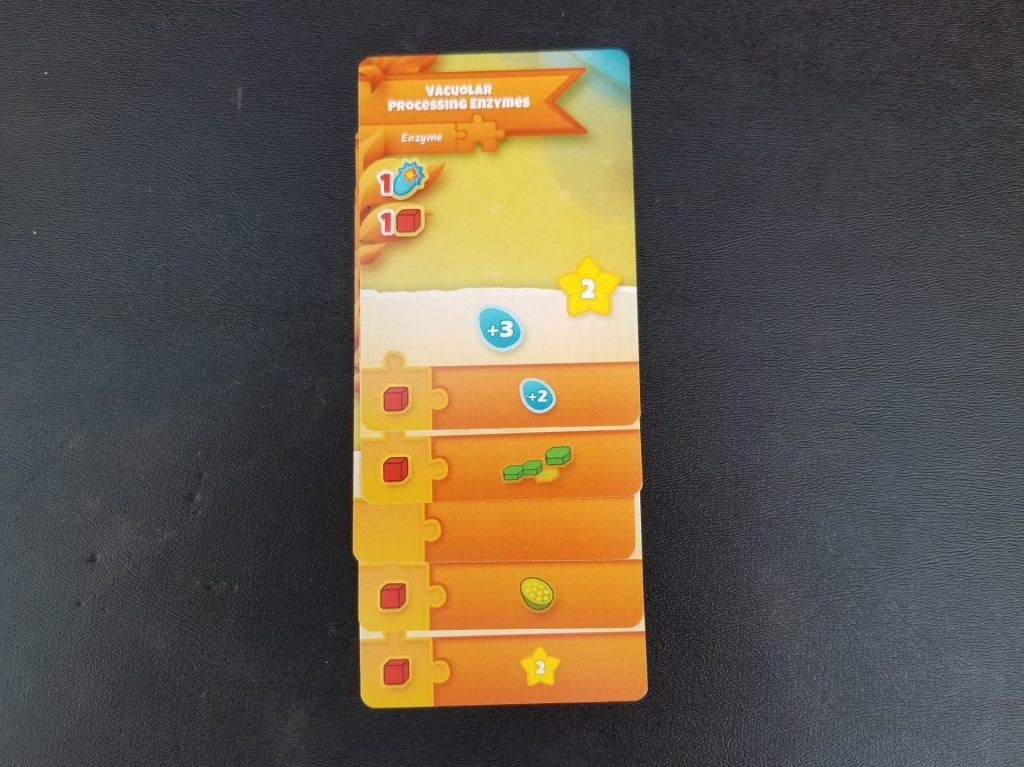
The Central Vacuole isn’t worth many points at first glance, but can net a boat load of points in the long run if a player is able to quickly race up its track. (Side note: the game rules do not talk about what happens if a player has already reached the end of the track and happens to win the end-of-round majority scoring). It’s an interesting addition which, while fun, also feels unnecessary as a game element. However, without its central vacuole, a plant cell couldn’t hold its form (yet another science-y thing this game sent me off on a quest to answer). When this organelle fills with water, it helps the cell hold its shape. Deprived of water, the cell shrinks and this shrinkage becomes visible to the human eye in the form of wilting. I’m not sure how I would have gameified such a vital plant cell component, but I think that Genius Games has handled it in a way that is thematically appropriate and I applaud their efforts.
In closing, if you hadn’t already guessed, I am a fan of Cellulose. If you’re a fan of Cytosis, I think you’re going to like this game even more. If you’re a fan of Genius Games, you won’t be sorry to add this one to your collection. If you’re a fan of worker placement games, then Cellulose is sure to delight. There’s enough here to entertain die hard gamers and newcomers alike. While we all require sustenance to survive, there’s another important thing we all have in common:
Gaming is in our DNA.


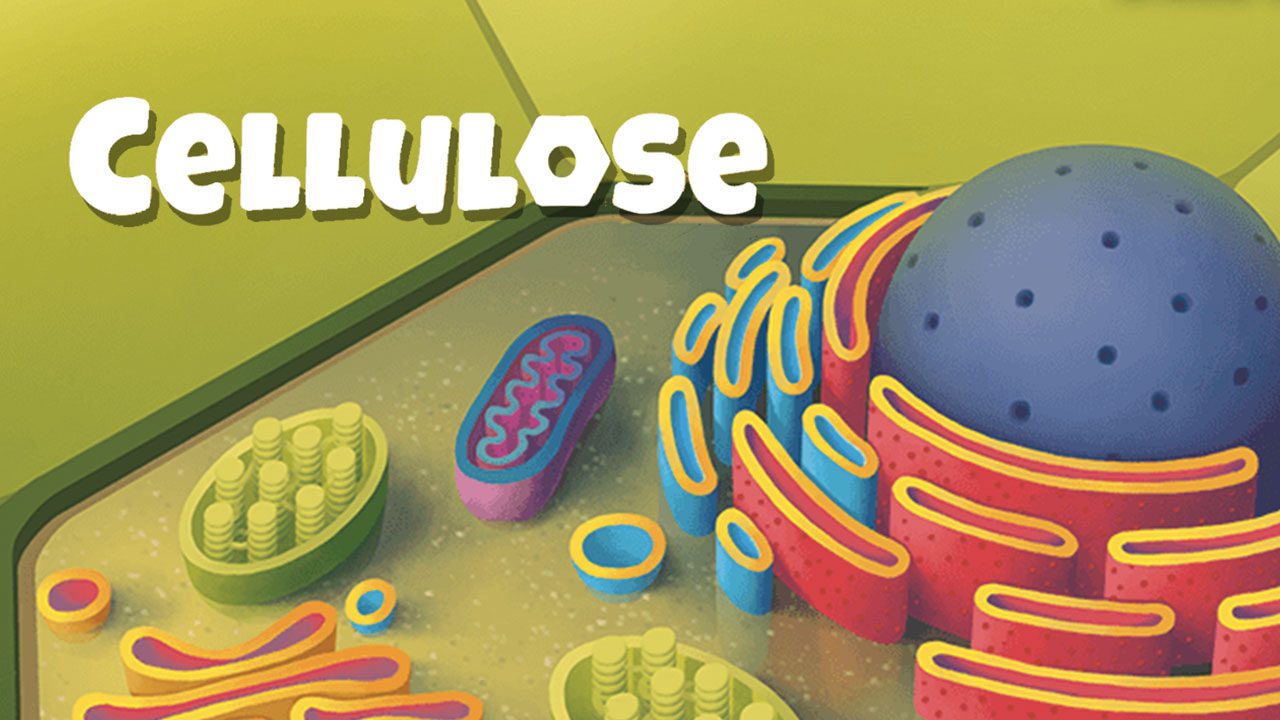
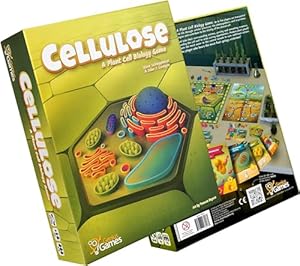








Add Comment